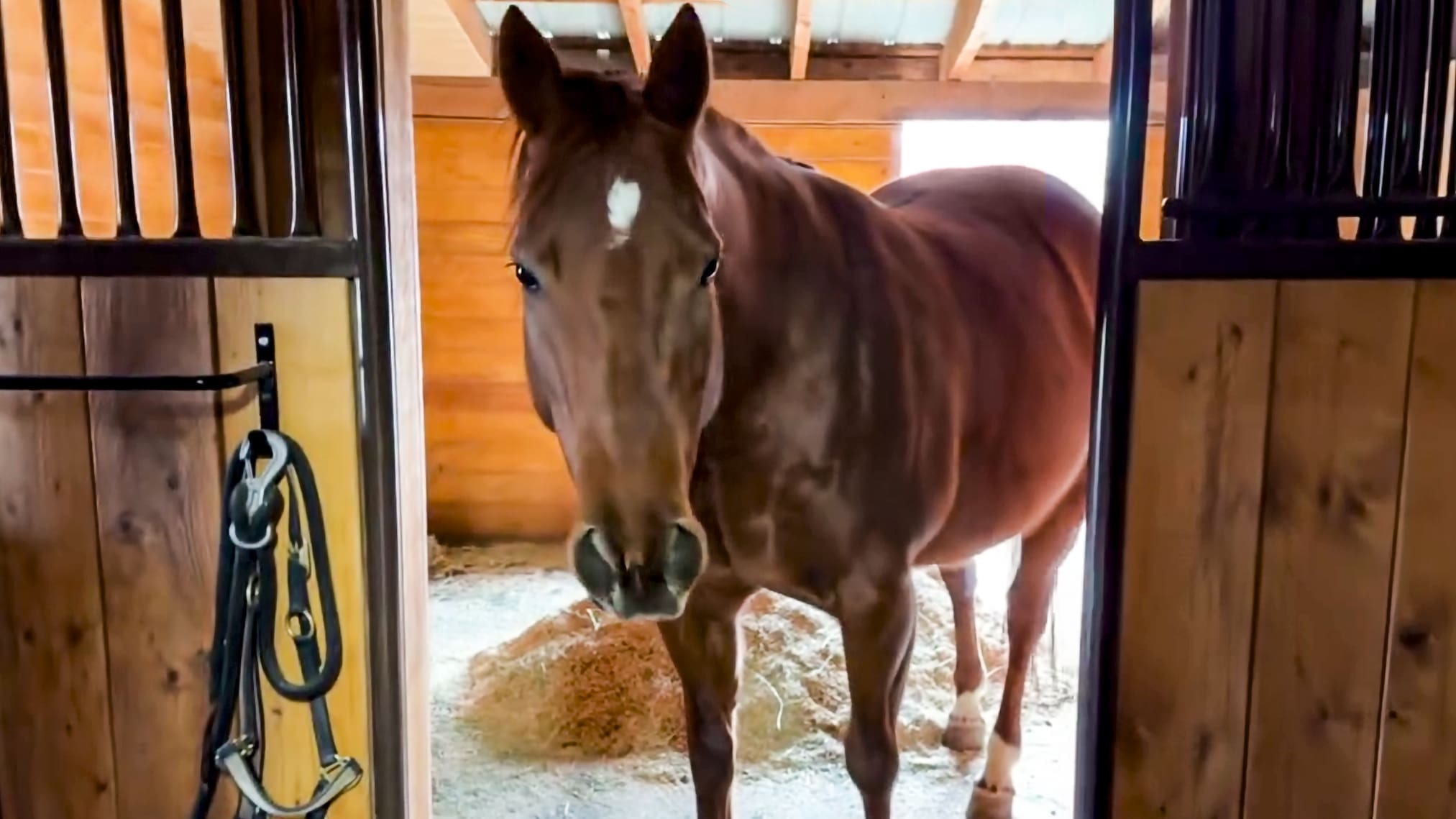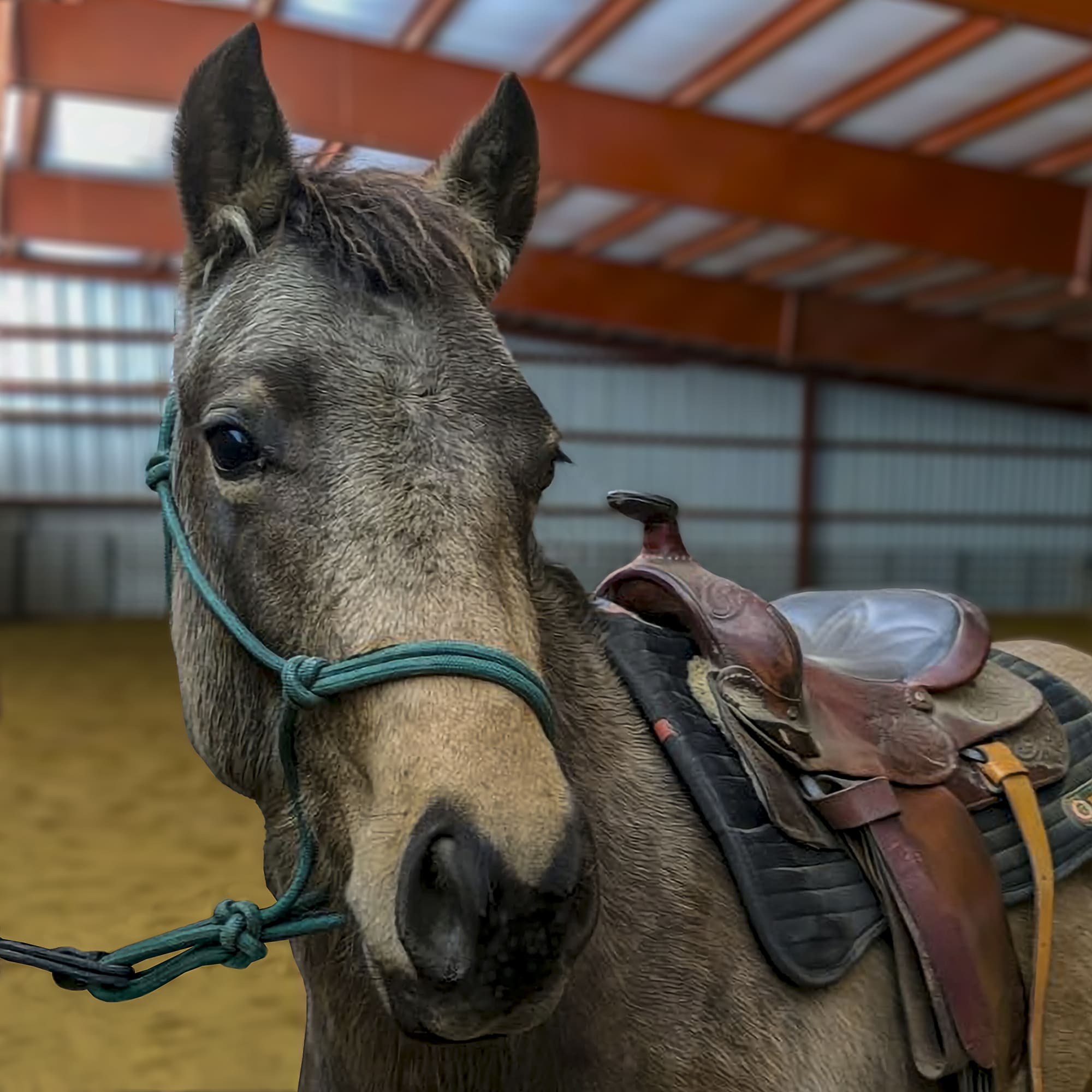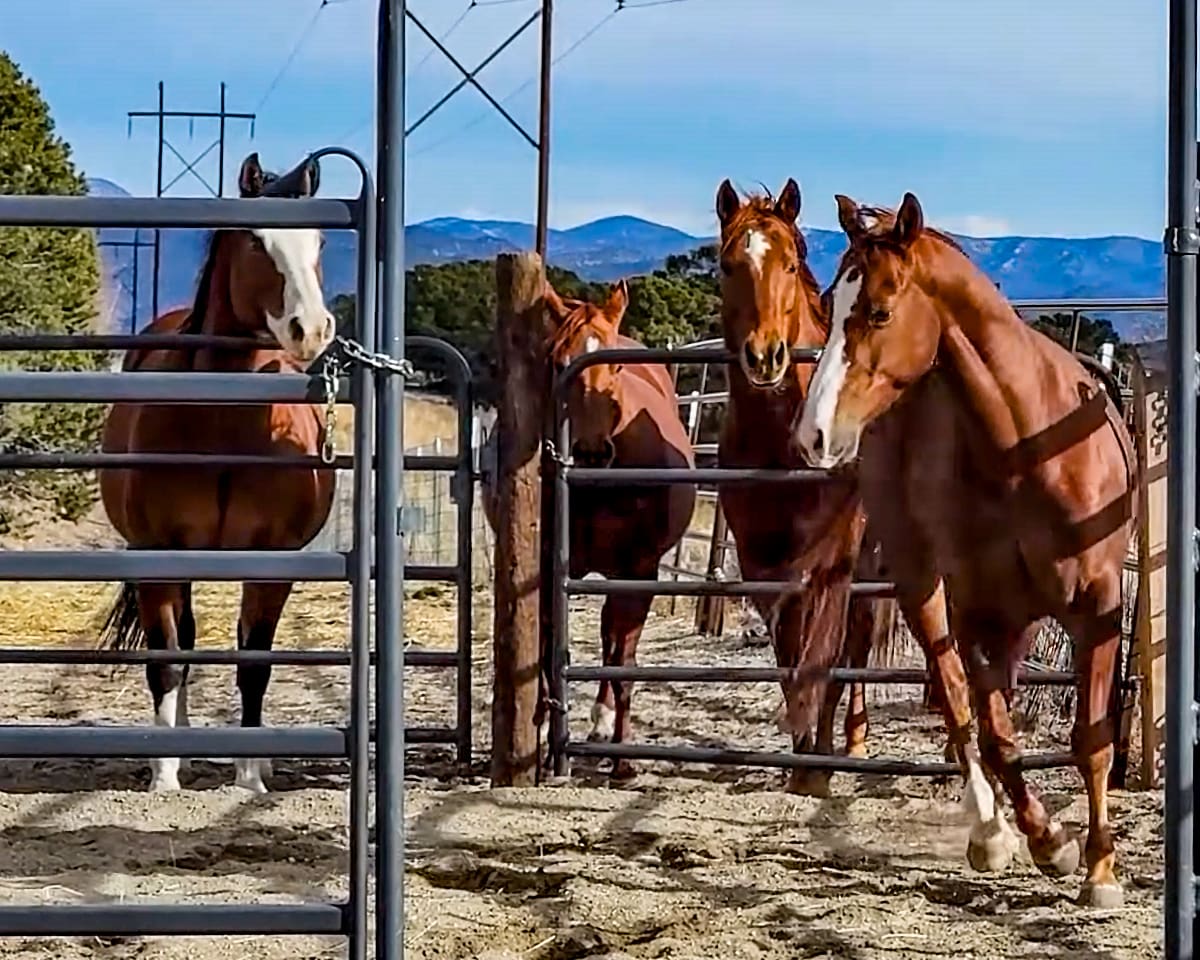Recently I was a speaker at the NARHA annual convention, which conveniently for me, was in Denver this year. That means I didn’t have to get on a plane to go somewhere for the first weekend in a long time. So right off the bat, I was happy to be there. It was an enthusiastic crowd from all over north America; hundreds of physical therapists, mental health specialists, therapeutic instructors, horse handlers, side walkers and barn managers that work for therapeutic riding programs (TRPs). My presentation was on avoiding and resolving burn out in therapy horses and it was a blast.
Now, this is a very popular subject because every TRP out there shares this problem. While only the best tempered and most qualified horses are used in such a program, their job is stressful (both physically and mentally), tiring, boring, repetitive and sometimes downright obnoxious. Sometimes as many as five adults are hovering over the client and micromanaging the horse’s every step. With a high dependency on volunteerism in TRPs, the horse has to get used to a revolving door of handlers. Sometimes the client is off balance, moving spasmodically or unpredictably, laughing or screaming loudly. Most therapy horses work hard for a living and many of them also have to make ends meet by working extra hours packing around able-bodied riders in lessons—a novice rider that thinks she knows what she is doing is often harder on the horse than a therapeutic client. As you can imagine, burnout is an occupational hazard in these horses.
Every TRP I’ve worked with has problems with horses biting, horses that learn bad habits or avoidance techniques (particularly around the mounting block), horses that develop bad manners, and worst of all, the horses that learn that they can get away with stuff like biting the handler when there is a client on its back because they know the handler won’t take the risk of disciplining the horse with the client on its back . Maybe you’ve had some personal experience with this, if not in a therapy horse how about in a show horse? I consulted with Disney World a few years ago and they had this problem with some of Cinderella’s ponies (you know, the little white ponies that pull the pumpkin carriage). Disney horse handlers are strictly forbidden from taking any disciplinary action at all when the horses are in the park in front of guests and unfortunately sometimes clever little devil ponies learn they can get away with stuff like biting the handler in the park, but they never do it outside where the handler could take disciplinary action. This is a very bad deal because once they learn that there is a certain place that they can get away with stuff, you cannot unlearn it. So we must do our best to prevent the horse from learning this to begin with by being diligent to the horse’s behavior and obedience and taking corrective action before the horse figures it out. Fortunately, most horses are not that smart.
Have you ever had a horse that learned he can get away with things in certain settings? It reminds me of when my sisters and I were little and my parents dressed us up and took us to a very fancy restaurant where we promptly staged a revolt and crawled under the white-linen table and refused to come out (it was my sister’s idea; I was just a pawn in her scheme). We just knew they wouldn’t do anything to us there and that there would be no spanking in the fancy restaurant. Little did we know that later, at home, we would come to regret our actions. Unfortunately, with horses, punishing them after-the fact will serve no purpose other than to confuse the horse and teach him not to trust you. Regret is not a train of thought your horse will follow. As I am fond of saying—once three seconds goes by, it’s a whole ‘nother day to the horse and there is no connection whatsoever.
Although a lot of these behavior problems in therapy horses have to do with the difficult and stressful job they do, much of this it has to do with poor handling and the ever-revolving door of handlers with varying degrees of competence. Many larger and well-funded programs employ a full-time trainer whose job it is to maintain the therapy horse’s training, avoid bad habits and take care of the horse’s mental and physical needs. But the smaller programs are scrapping for every labor dollar they have and usually can’t afford this luxury, so they have to do the best they can, with the people they have.
I wish I had had more time for the presentation because we had about 8-10 therapy horses from several different programs here in Colorado, with a variety of interesting issues. It was way too many horses to work with in the 90 minutes allotted to me. There were a many points that I wanted to stress in training the volunteers and in the day-to-day handling of the horses, but I found myself focusing again and again on a few key points: don’t micro-manage the horse, don’t crowd and grab the horse and be sure to maintain a level of authority with the horse.
Biting horses is probably the most common problem TRPs deal with, a problem that many horse people encounter, but the therapy horses are way more prone to it than any other population I know of. I’ve spent some time pondering this problem and have observed many different operations and to me, the cause is quite clear—the horses are sick and tired of everyone being in their space! These horses get so over-handled with so many well-intentioned people that don’t always do the right thing. The horse handler crowds the horse’s face, often choked up on the lead rope and micro-managing every movement the horse makes (if he’s being used in a TRP, he knows what he is doing; he does it every day and usually knows it better than the handler). Worse, the handler sometimes leads with the reins or clamps down on the reins just behind the bit; both of these actions are VERY hard on a horse’s mouth. Is it any surprise so many therapy horses bite?
It’s just like with riding a horse—at some point you need to quit micro-managing him and just trust the horse to do his job, especially when it is something he knows how to do. Step back, put some slack in the lead (or reins) and let him do his job. You cannot prevent a horse from moving by holding him still (who are you kidding if you think you can hold a 1,00# horse still?) but you can train him that it is an expectations of yours that he not move his feet without a cue, then step back, loosen the lead and expect him to stand; correct him if he doesn’t. Don’t try to prevent him from making a mistake, just correct him when he does.
This will only work if you have authority over your horse and he respects your leadership; otherwise, when you step back or loosen up, he just does whatever he wants. I have written a lot about this subject—it’s all over my Training Library—and I spent a lot of time in my NARHA presentation just teaching simple ground manners to the horses (and teaching the handlers what to do and what not to do). A horse doesn’t automatically respect you, trust you or accept your authority over all things unless you earn it. And if everyone knew how to do that, I’d be out of a job!
It was a great workshop and I really enjoyed it. The session ended too soon and as usual, I could think of about a thousand things I wish I had time to cover. If you were there, let me know what you enjoyed the most and what you wished we could’ve covered. If you’re involved in a TRP—good for you! It is a valuable and satisfying field and TRPs are always in need of more volunteers, so check it out. If you cannot afford the time, maybe you can make a donation to your local TRP (cash is king for these low-budget non-profits). If you are not involved in a TRP, perhaps you can still find some useful information here to help you avoid problems with your horse.
Enjoy the ride!
Julie
http://www.juliegoodnight.com
http://www.horsemaster.tv




No comment yet, add your voice below!